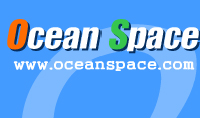Korea is a water borne country of some 4,000 islands with
only two functional marinas. Through our own industry research
into Korean Maritime leisure, we find there will be an influx
of marina development projects in the near future.
Marina development in Korea faces three problems.
- Available land
- Large tidal variation
- Long lead times for construction
A marina is more than just a pontoon system. A functional
marina comprises a breakwater to protect the vessels, the
pontoon system to house the vessels, a club house and retail
tourism precinct, fuel reservoir and associated support facilities.
The Ocean Space system provides for all of these in a turn
key self contained unit.
Marinas are often located in prime port side locations.
In Korea these locations are already developed and reclamation
of the existing properties poses considerable political difficulty
and financial overhead. The Ocean Space system allows a marina
to be located anywhere there is clear portside berthing.
The Ocean Space system can literally be berthed in prime
locations with very little alterations required on land other
than car parking space.
In many Korean cities water depths are in excess of seventeen
meters with tide ranges up to six meters. To develop a standard
marina would require considerable rock wall works needing
long lead times and large SOC costs. The Ocean Space system
is a floating static level system that does not require fixed
location break waters. The entire marina floats with the
tide giving a calm consistent berthing condition for vessels
irrespective of the surrounding tide and weather conditions.
One of the major concerns facing Korea right now is the
potential for organic growth of the domestic maritime industry.
If you consider statistics alone, Korea has a population
of 48 million people and only fifty nine vessels in excess
of thirty feet. In comparison, Australia has a population
of 22 million people and 660 thousand vessels, thirty thousand
of which are over thirty feet. Regardless of the growth model
you use, Korea faces the problem of providing enough facilities
of a sizable nature to allow for that growth. A fixed break
wall system such as is currently available in the market
place would limit that growth and pose the difficulty of
modelling marina's on-potential demand over a twenty year
period. It is our opinion that gauging such demand would
be extremely difficult. The modular nature of the Ocean Space
system will mean that initial demand can be met with simple
units and then further modules can be added quite easily
without the related expansion difficulties and infrastructure
mentioned earlier in this report.
Indications are that the Korean maritime leisure industry
will grow fast. Building traditional marinas will not meet
with the demand and may stagnate or at least hinder the development
of the industry. The Ocean Space system production lead time
is simply limited by the time required to build the civil
structure. Lead times in this manner would be significantly
reduced from years to months.
Other than visual appeal, it is our opinion that the Ocean
Space system provides Korean Maritime leisure with the opportunity
for rapid growth, reduced cost of development and a functional
system that could be applied to any location in Korea.
With a successful track record in Korea this system also
has the potential for export to locations where the cost
of developing a standard system could not be considered.
|


